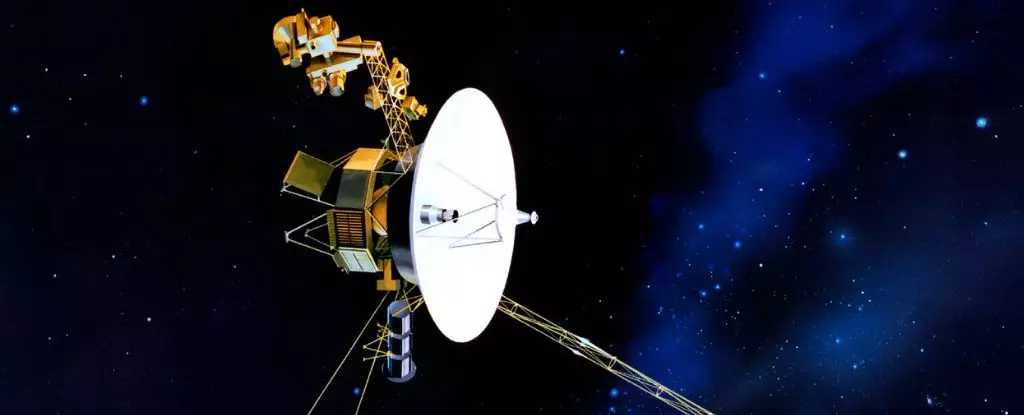Launched in the late 1970s, the Voyager spacecraft—Voyager 1 and Voyager 2—have become symbols of humanity’s quest for knowledge beyond our planet. Over 45 years later, these spacecraft continue their journey through the cosmos, providing unparalleled insights into the deep solar system and the interstellar space that lies beyond. With each passing year, as they drift further from Earth, the challenges they face intensify, yet their contributions to science remain invaluable.
Both Voyager probes were launched during a unique celestial alignment that occurred only every 175 years, which allowed them to conduct a highly efficient tour of the outer planets. Voyager 2, which was the first of the two to launch, visited Jupiter, Saturn, Uranus, and Neptune, yielding a wealth of data that changed our understanding of these distant worlds. Voyager 1, following a separate trajectory, flew by Jupiter and Saturn, gathering vital data and images that revealed the wonders of our solar system.
Navigating the Heavens on Limited Power
The power sources for these spacecraft are based on radioisotope thermoelectric generators (RTGs), which convert the heat released by the decay of plutonium into electricity. However, this power supply diminishes over time, with a significant loss of output occurring each year. NASA has been tasked with the difficult decision of prioritizing which experiments to keep operational. Recently, the plasma science instrument onboard Voyager 2 was turned off as energy constraints necessitated a more judicious use of power.
This particular instrument had been essential for measuring the flow and quantity of ionized particles in the surrounding plasma, a data point vital for understanding the nature of interstellar space. Unfortunately, due to Voyager 2’s position and orientation, the instrument had been yielding limited data in recent years. NASA’s engineers have implemented careful strategies over the years to extend the lifespan of scientific instruments onboard the Voyagers. They have gradually powered down non-essential systems, leaving the most critical instruments operational for as long as possible to continue gathering unique scientific data from this uncharted territory.
As the only human-made objects that have entered the interstellar space, Voyager 1 and Voyager 2 provide a singular glimpse into a region previously untouched by direct human exploration. On August 25, 2012, Voyager 1 crossed the heliopause—the boundary where solar wind is stopped by the interstellar medium—marking the spacecraft’s official entry into interstellar space. This moment was celebrated as a monumental achievement, expanding our understanding of where our solar system concludes and the vast universe begins.
Following in Voyager 1’s footsteps, Voyager 2 crossed the heliopause on November 5, 2018. Since then, both spacecraft have continued to relay essential data regarding the interstellar medium, offering crucial insights about cosmic rays, the interplanetary magnetic field, and the characteristics of plasma outside the protective bubble of the heliosphere.
The journey of each Voyager has transformed them into our eyes and ears in the depths of space, even with the delay in communication—nearly two days for a round trip. This significant lag illustrates the physical distance separating us from these probes, yet each data point they return is a treasure trove of knowledge, deepening our understanding of the cosmos.
With limited power and the constant ticking clock of time, decisions regarding the operational status of the Voyager instruments loom ever larger. Post-1980, several instruments on the spacecraft were deactivated after the primary mission exploring the gas giants concluded. NASA’s current mission phase seeks to maximize the scientific return from what remains, pushing the boundaries of our knowledge while preserving the function of the remaining instruments—four on Voyager 2 as of now.
As we look forward to the future, the prospect of further instrument shutdowns raises concerns regarding what data may be lost. The ongoing adjustments and voltage monitoring steps taken by engineers highlight a mission that is as much about survival as scientific exploration. The shutdown of the plasma science instrument echoes a similar fate of its counterpart aboard Voyager 1, which was incapacitated in 1980. Such decisions underscore the delicate balance between maintaining power and the pursuit of knowledge.
The continued operations of Voyager 1 and Voyager 2, despite their age and the creeping limitations of their power supplies, stand as a testament to human ingenuity and resilience. As they voyage further away from their home planet, they carry with them humanity’s pioneering spirit, expanding the frontier of our understanding. The data collected will inform scientists for generations, inspiring future missions and encouraging further exploration into the cosmic unknown.
As we contemplate the eventual power loss and operational shutdown of the Voyager instruments, we reflect on their extraordinary journey—an emblematic representation of humanity’s search for knowledge. The twin Voyagers not only charted the solar system’s outermost edges but also extended our curiosity into interstellar space. Their messages gather dust among the stars, serving as a beacon for future explorers and a reminder of mankind’s place in the universe.


Leave a Reply